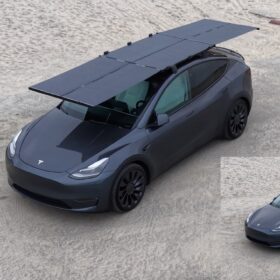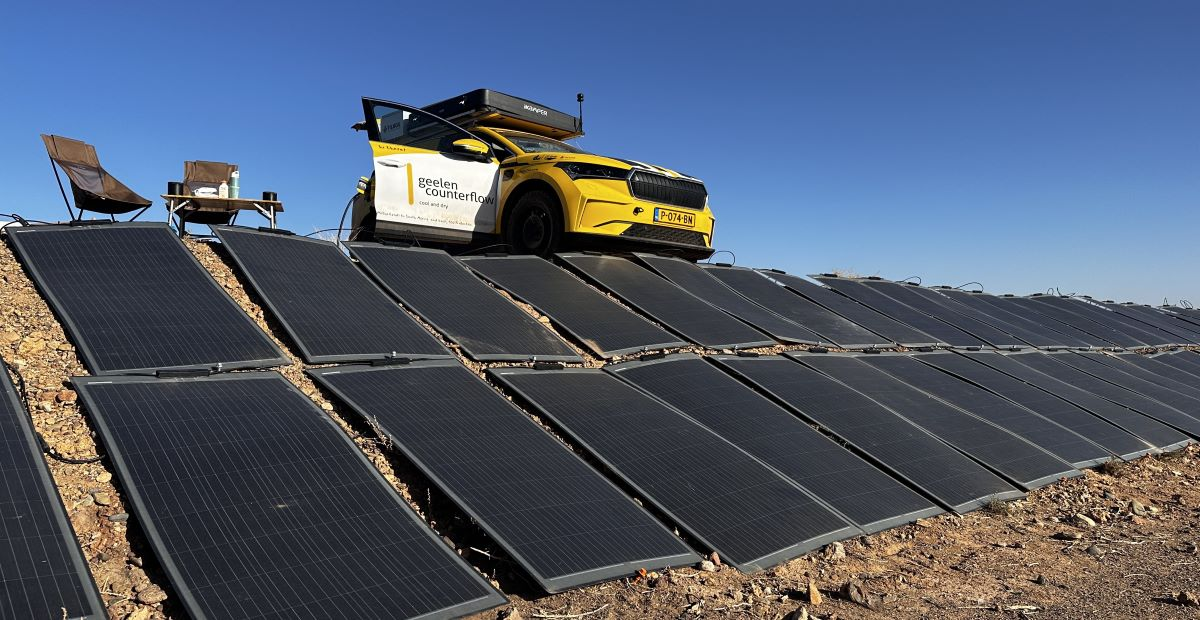Up the Kilowahs! Checkout the EDB Scoreboard



ChargeNet reaches double figures and looks ahead to much more electric transport; an Aussie town at the end of the line goes for pumped hydro, so how does it stack up here?; a new version of rooftop solar offers a little top up for EVs, while trials continue for wireless charging on the road; the EA's Power Innovation Pathway is open for business (and we need all the customer-focused innovation we can get); and a suggestion for those environmentally-focused email footers.

All the talk this week has been about the ‘damp squib’ energy reforms that rejected the bulk of the proposals, didn't focus on households and potentially locked us in to an expensive solution we don't need (in case you’re wondering, a squib is a small firework that hisses and then explodes). There's plenty of disappointment about themissed opportunity, and it's clear that policy plays a very important role in the transition, especially when it comes to providing the cheap electricity we need to unlock all the economic benefits of electrification. But people play an important role too and there are plenty of positive, innovative and community oriented things happening in the electrification space that are gathering momentum - in large part because the economic argument is now so compelling. That’s what Rewiring Aotearoa likes to focus on, and this Friday rundown is a part of that positivity.
Taking the cake
ChargeNet has reached double figures and it hosted a bit of a shindig to celebrate (good to see EV owning Transport Minister Chris Bishop in attendance; now we just need him to charge up with Chris Hipkins' solar system for a show of true bipartisanship).
The network now spans over 500 charging points across the country and the company has logged more than three million charging sessions since it was launched by Steve and Dee West in 2015.
As chief executive Danusia Wypych said:
“From a decade ago when ChargeNet’s founders imported the country’s first Tesla, there are now more than 125,000 battery electric and plug in hybrids on our roads, and this number is growing fast. In under a decade, EVs have gone from niche to entirely mainstream and we are now seeing business fleets, commercial customers, and trades businesses signing up to use our public EV charging network. When fleet orders are being booked in the hundreds, you know the future is arriving.”
“Over ChargeNet’s decade of operation we’ve seen the inevitable shifts in the market and policy changes but the fundamentals all support continued electrification. There’s now multiple EV ute options, EV vans, China is emerging as an innovative, lower cost EV importer, and government remains committed to partnering with industry on EV infrastructure.
“ChargeNet’s own polling shows almost 25 per cent of Kiwis already own or are considering buying an EV in the next three years, and this is during a period of sustained economic challenges. As the economics of EV ownership steadily improve, we are forecasting strong year-on-year growth in EV ownership and demand for public charging.”
Pump it up?
New Zealand has a world-leaing hydro storage scheme in the form of our lakes (and they could be used more strategically and kept full with more solar). We often get asked about pumped hydro and a rural community in Australia has embraced it.
“Brownouts, power surges and blackouts that last for days are a fact of life for a small Western Australian town at the end of the power line. It prompted a local engineer to build a small pumped hydro power station to deliver instant electricity when the grid fails.”
Pumped storage is an incredibly elegant idea and it’s been around for over 100 years. It is used quite a lot around the world, in countries that have challenges meeting peak demand - i.e., we just need something to do a job for a couple of hours (over the morning or evening peak) and then we can pump in between. In these situations, you don't need large head ponds or tail ponds, because you need a relatively small amount of water to do the 2-3 hour job.
But we don’t have pumped storage in New Zealand because our issue has always (historically) been dry years, where inflows are low for weeks and months (not just a couple of hours). The storage ponds needed to manage this with pumped storage would be colossal. The only plausible way to solve this with pumped storage was Lake Onslow, and that was going to cost around $26b including the transmission upgrades.
At large scale it is f***ing expensive and contentious. Small scale is a waste of time. So there’s a goldilocks size in the middle which works, which is why we don’t see a lot of it.
We are now moving into an era where peak capacity is a problem in New Zealand, so pumped storage might start to have some applicability. The challenges are mainly around getting natural features in the land to store the water (top and bottom ponds), getting land access and resource consents.
There are also other cheaper and easier options that can do the same job. Here is an example: 400m long pipe, 37m drop, 2 x 6m wide water tanks (120,000 litres) - about two swimming pools of water, one on each side.
It produces 3kW, the same as six solar panels and half the power output of a home battery.
So you've built two swimming pools, a 400 metre pipe and pumps to get what a $10k battery could give you in a fraction of the space.
That is to say, the goldilocks zone does not seem to be small scale farms.
A new kind of rooftop solar
Solar-powered cars are a nice idea, but they just don’t provide enough energy to make a huge difference. That hasn’t stopped a few from trying, like Aptera - and we have also seen some impressive - and impressively light - solar powered planes that could theoretically travel non-stop.
DartSolar’s expandable panel system fits on any EV with a roofrack and the site says “the 1kW version adds 10-to-15 miles per day. The 2kW version adds 20-to-30 miles per day.”
Roadtests with a Model Y showed drag was only increased by around 1 to 2%. It comes in at 41kg and an adapter allows drivers to use the roofracks.
If you want to go a bit bigger, one intrepid couple used some fold out panels to drive 38,000 km across Africa and they provided almost half of the energy they needed for the trip.

Or you could just chuck one up on the roofracks of your petrol car, like this one spotted recently at Cardrona.

If you’re not keen on powering EVs up top, there’s always charging via the road. Australian Energy Minister Chris Bowen was recently in Detroit to see induction charging and while it’s currently very expensive, there are trials taking place around the world for “both static, while parked, and dynamic, while in motion, applications, particularly in Europe, North America, and South Korea.”
There’s even been one project in New Zealand.
The Golden Path
Applications to the Power Innovation Pathway are now open. The scheme is run by the Electricity Authority Te Mana Hiko and it’s an ‘open front door’ for innovators wanting easy access to regulatory information and support to bring fresh ideas to market faster.
Power Innovation Pathway Manager Jono Barnard says the scheme supported over 80 innovators in its first year.
“To date, eight high-value initiatives have received enhanced regulatory support from the Authority, and we’re excited to build on that momentum through this second priority round of applications. In this round, we’re calling for innovators and the innovation community to present us with novel ideas which can be tested that have the potential to deliver benefits to electricity consumers.”
This feels like something that’s sorely needed after the lacklustre reforms announced by the Government this week that are largely focused on the big end of town. So if you've got an idea, get in there.
Out of print
Anyone still rocking these?

Might we suggest an upgrade for the modern era to 'please consider the environment before buying your next fossil fuel machine'.

It's time to show some interest in low-interest, long-term energy loans; looking enviously across the seas at Australia's energy push; an electric atmosphere beckons as the Special Olympics heads to the all-electric Parakiore indoors sports and swimming centre in Christchurch; EV Maritime's Michael Eaglen and Evnex's Ed Harvey share their views; Volkswagen follows the honey in its electric van; and climate comedian Oli Frost generously creates an ad campaign for French bank Société Générale.
Read moreDownload
You may have heard there's an 'electric election' coming up next year. We've met with a huge range of politicians from right across the spectrum and the ones who pick up what Rewiring is putting down are often those who have already invested in solar, batteries, EVs, heatpumps and induction cooktops and have experienced the benefits first hand. That's why we're kicking off a new series called Political Power, where we talk to some of our decision makers about the decisions they've made in their own lives and how they plan to reduce energy bills for others, reduce emissions and improve our resilience and energy security.
Read moreDownload
Electrify everything. Electrify everyone. Electrify New Zealand. That's Rewiring Aotearoa's vision and our CEO Mike Casey gave a condensed version of what we've done and what we're doing at our Electric Christmas party recently. As he said to a large crowd at Ecotricity, which kindly hosted the event and provided the excellent electric cake, 2024 was the year of the thinking, 2025 was the year of the doing, and 2026 will be the year of mass adoption.
Read moreDownload